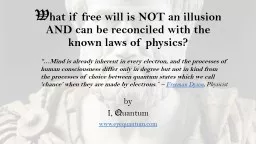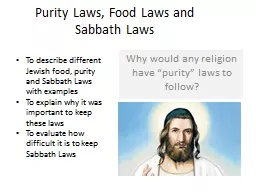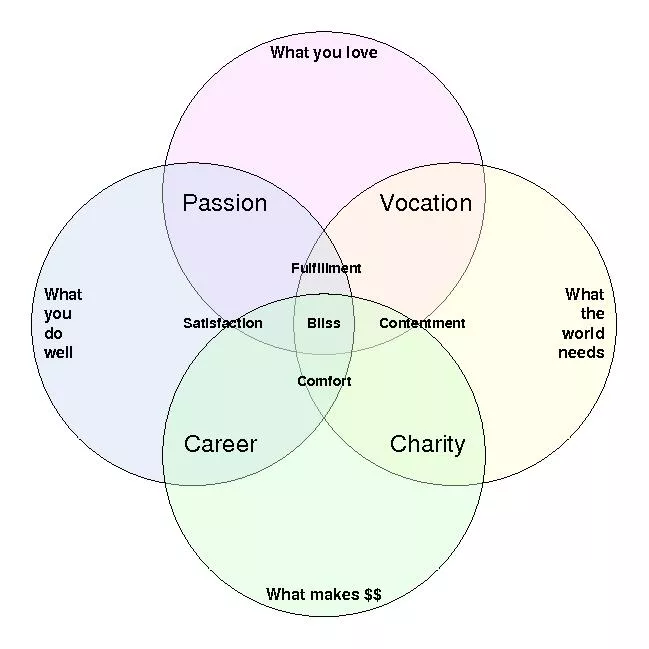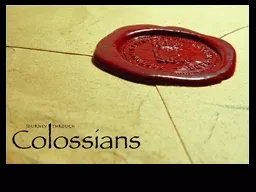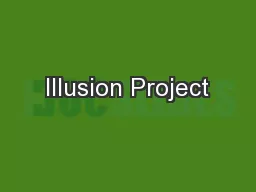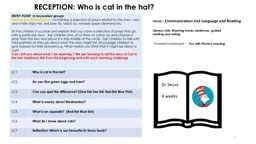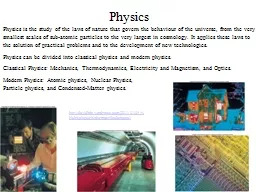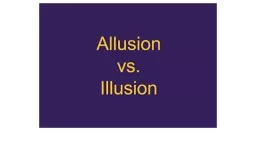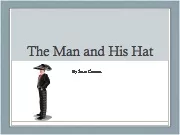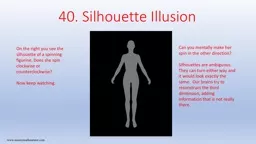PPT-W hat if free will is NOT an illusion AND can be reconciled with the known laws of physics?
Author : neoiate | Published Date : 2020-07-03
by I Q uantum wwweyequantumcom Mind is already inherent in every electron and the processes of human consciousness differ only in degree but not in kind from the
Presentation Embed Code
Download Presentation
Download Presentation The PPT/PDF document "W hat if free will is NOT an illusion AN..." is the property of its rightful owner. Permission is granted to download and print the materials on this website for personal, non-commercial use only, and to display it on your personal computer provided you do not modify the materials and that you retain all copyright notices contained in the materials. By downloading content from our website, you accept the terms of this agreement.
W hat if free will is NOT an illusion AND can be reconciled with the known laws of physics?: Transcript
Download Rules Of Document
"W hat if free will is NOT an illusion AND can be reconciled with the known laws of physics?"The content belongs to its owner. You may download and print it for personal use, without modification, and keep all copyright notices. By downloading, you agree to these terms.
Related Documents

